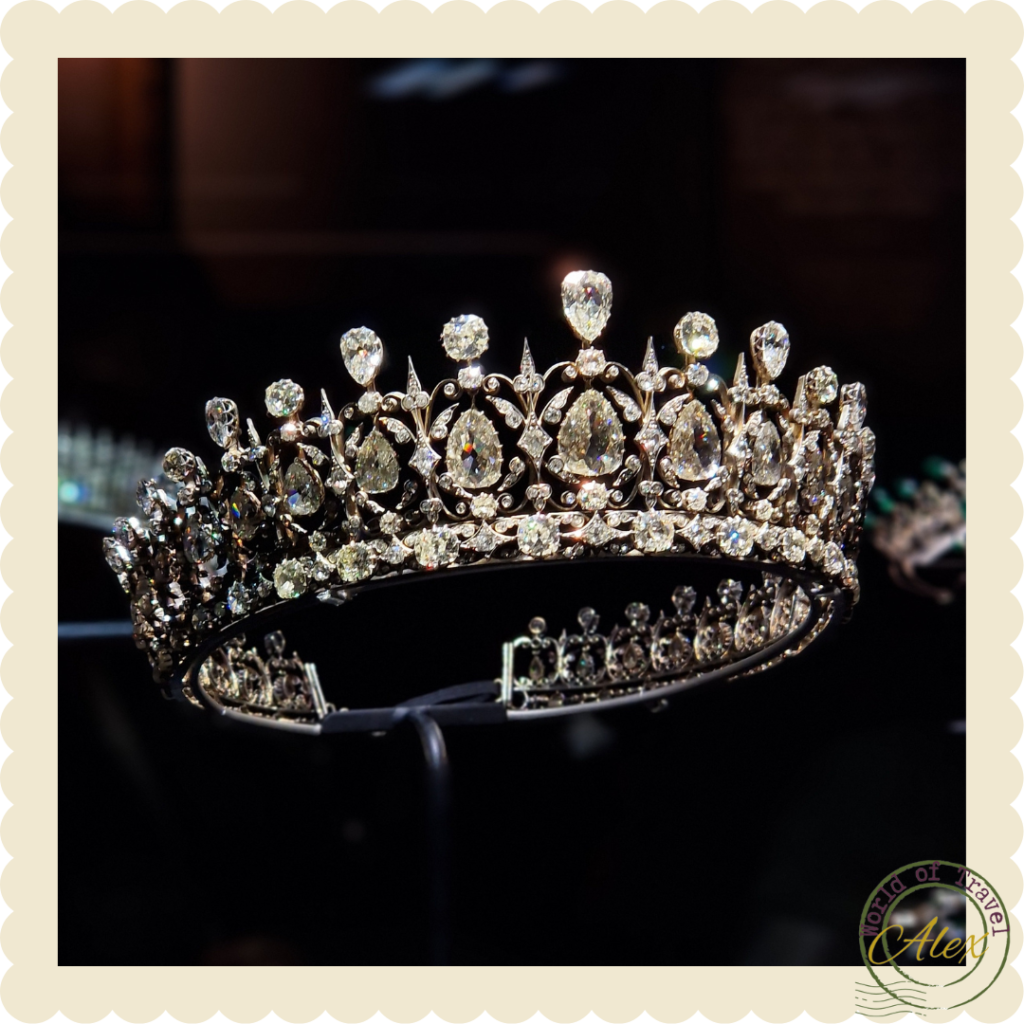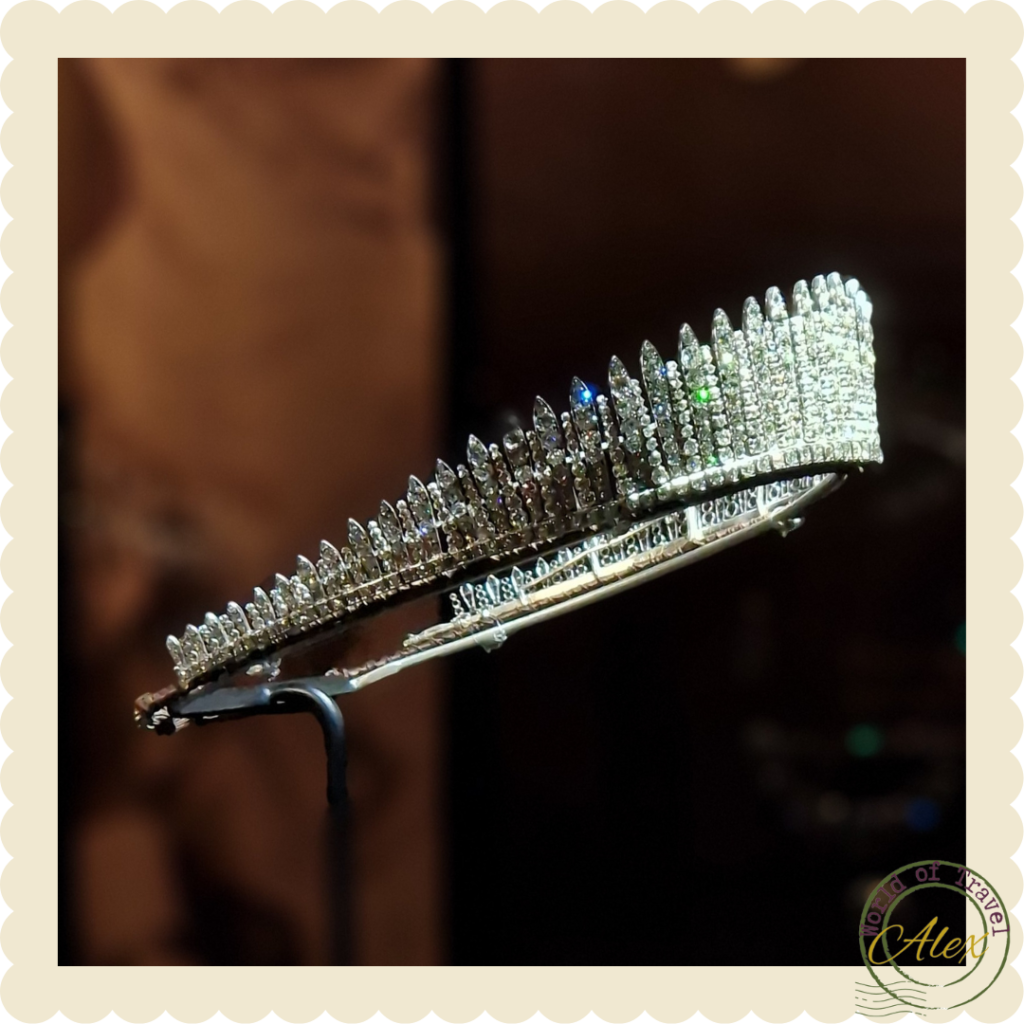Visiting the Jewel room at Kensington Palace
The most beautifyl display at Kensington Palace is the Jewel Room, and well worth a visit.
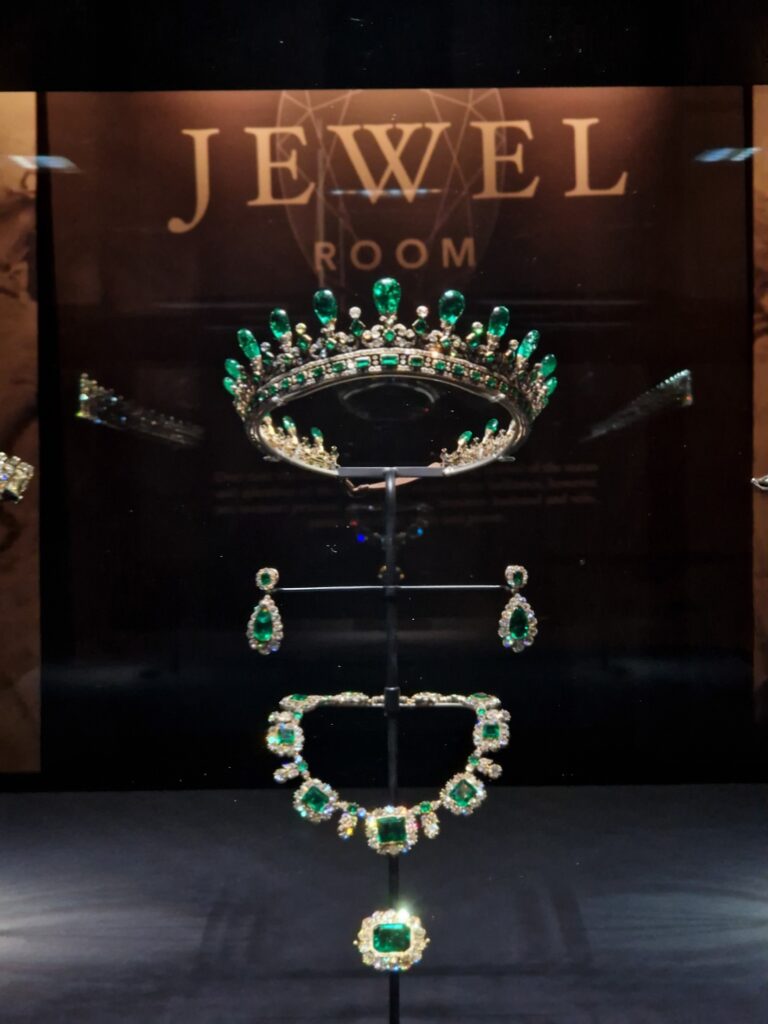
Plan your visit
In the Jewel Room at Kensington Palace, Queen Victoria’s beautiful emerald parture with a tiara, necklace, earrings and brooch. The jewellery is on display alongside a diamond Kokoshnik tiara and the Fife diamond tiara both once belonged to Queen Victoria’s granddaughter, Princess Louise, the Duchess of Fife.
To access the Jewlery room you need a ticket for Kensington Palace, and the exhibition is included in the price.
Queen Victorias Emerald Tiara
Crafted as a tapered openwork band, this exquisite tiara features delicate scroll motifs embellished with cushion-shaped diamonds. Each diamond is elegantly set within gold collets. The tiara’s intricate design is further accentuated by the inclusion of step-cut emeralds.
The tiara has a row of nineteen inverted pear-shaped emerald drops, each with its own unique weight, the central gem weighing in at approximately 15 carats and the weights decreasing gradually outward. The inner length of the tiara is approximately 455mm.
The necklace is composed of nine oval emerald clusters, each surrounded by cushion-shaped diamonds.
In addition to the tiara and necklace, Prince Albert also presented Queen Victoria with a pair of pendant earrings and a breathtaking 20-carat emerald and diamond brooch.
In 1843, prince Albert presented Queen Victoria with the necklace, earrings, and brooch. The emeralds were made to match her engagement ring, also emerald, the Queen’s birthstone.
The beautiful emerald tiara was made by court jeweller Joseph Kitching in 1845, at a total cost of £1,150.
Queen Victoria held her emerald-set jewellery in high regard, choosing to wear them for the 1846 Winterhalter portrait of her with her family, which commemorated her son Prince Alfred’s christening. She wore them again in another Winterhalter portrait in 1859.
Victoria is also depicted wearing the emerald parture in a reproduction by George Koberwein, originally painted by Winterhalter in 1852, and it predates August 1865. The painting is currently on display at Kensington Palace alongside the jewellery.
A picture taken of Princess Victoria of Hesse and by Rhine, later Victoria Mountbatten, Marchioness of Milford Haven (grandmother of Prince Philip, Duke of Edinburgh), probably taken around the 1880s at a costume ball, shows her wearing her grandmother’s emerald tiara.
The emerald and diamond parture became the possession of Queen Victoria’s granddaughter, Princess Alexandra, who later became the Duchess of Fife. The tiara has remained within the family and was most recently worn by the 3rd Duchess of Fife during the 1960 State Opening of Parliament.

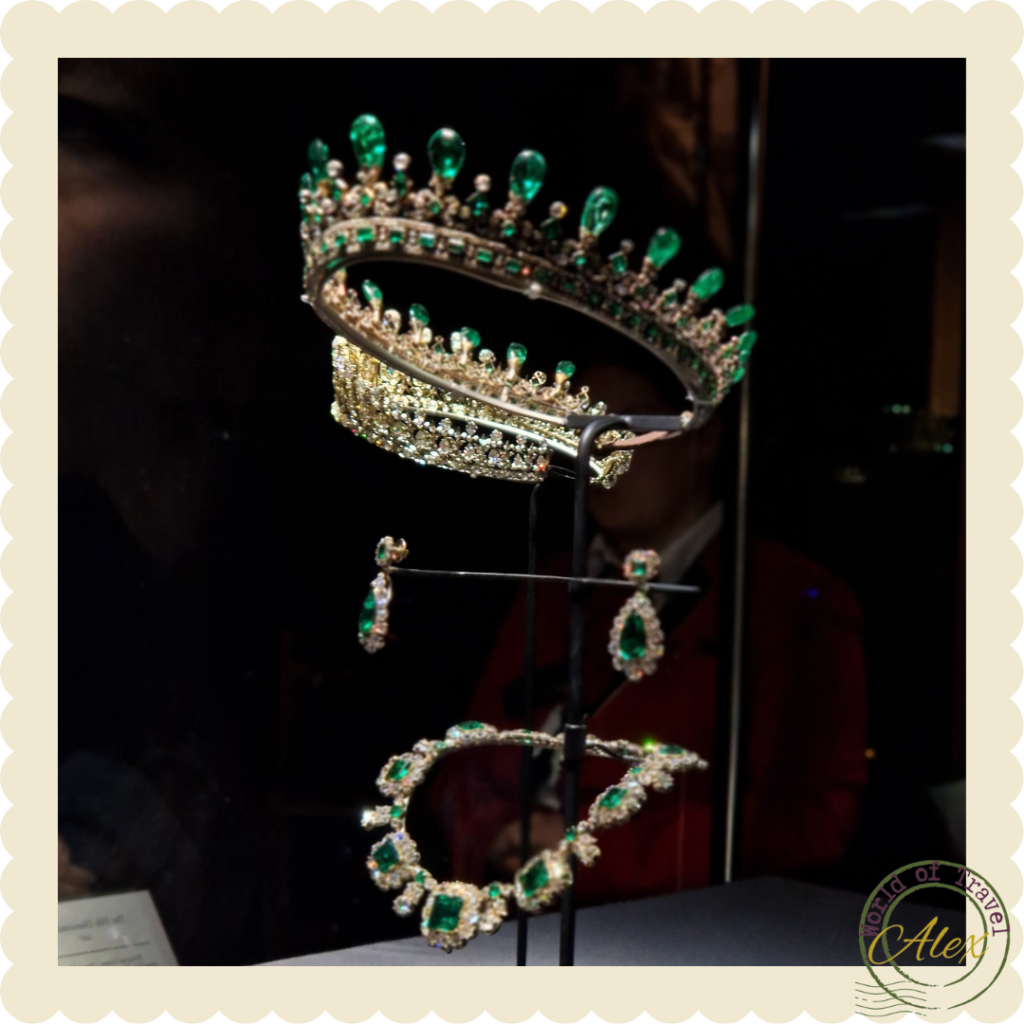
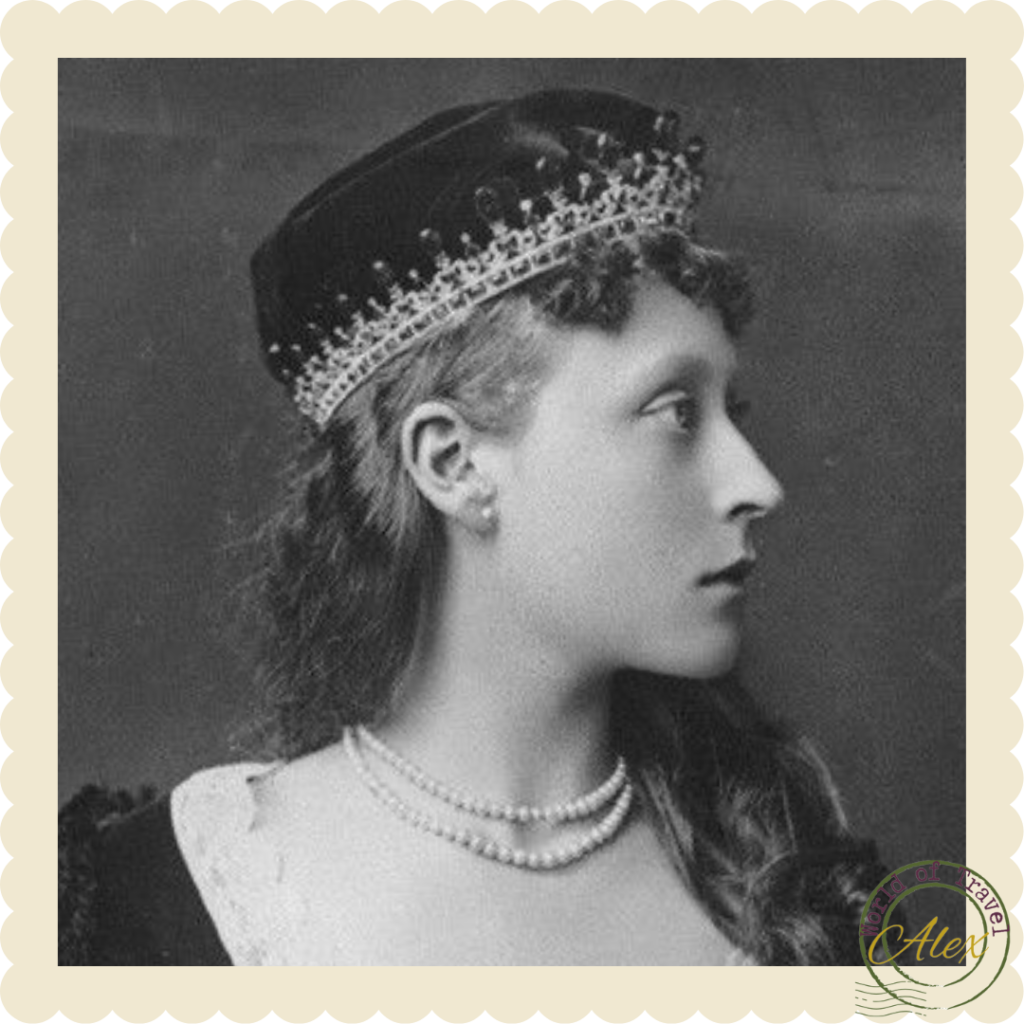

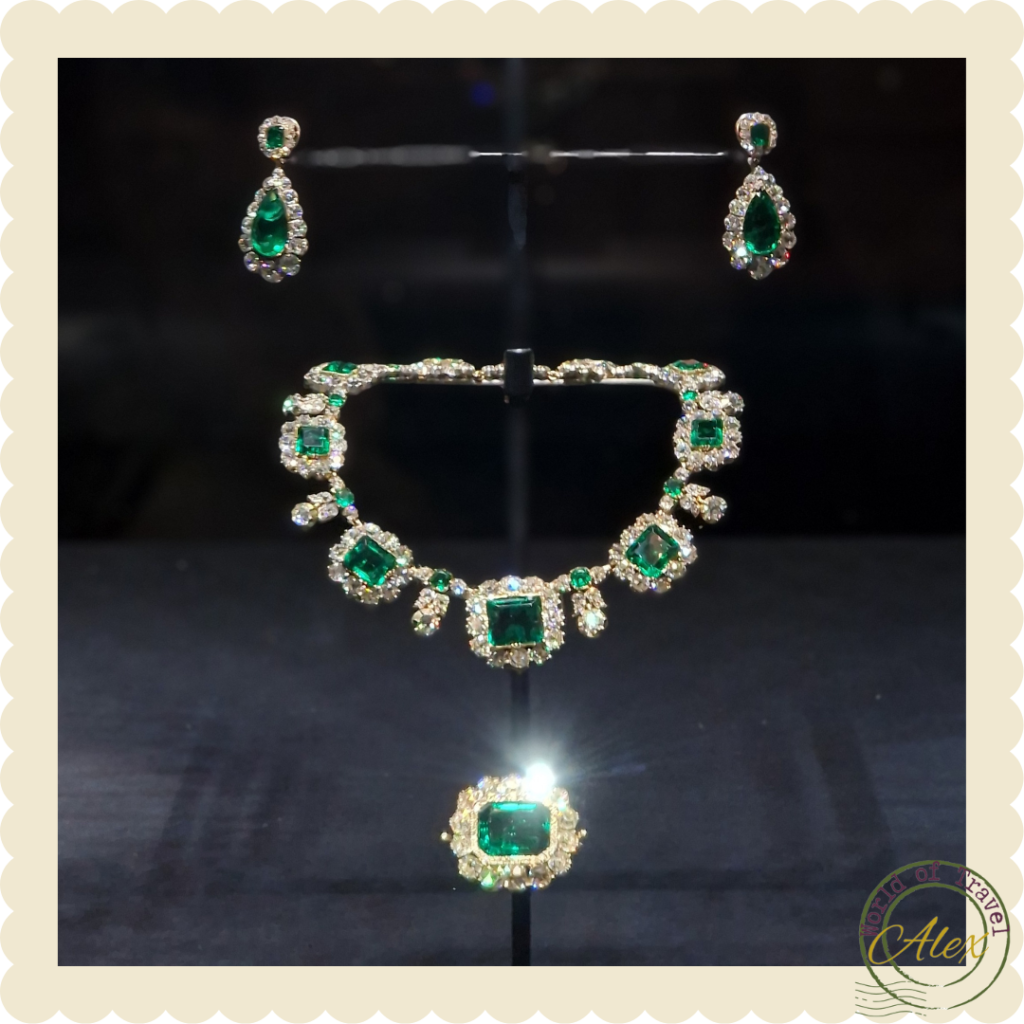
The Kokoshnik Tiara
Princess Louise’s Diamond Necklace Tiara or the Kokoshnik Tiara, from around the 1890s, was a wedding present from her parents, the Prince and Princess of Wales (later King Edward VII and Queen Alexandra of the United Kingdom).
What’s unique about this tiara is its versatile design, which allows it to be worn both as a necklace and a tiara. A small bespoke key comes with the tiara, which can be inserted at both ends of the frame. This allows the tiara to come loose and can then be worn as a necklace.
The tiara’s design is a tribute to the Kokoshnik style, a traditional Russian headdress reminiscent of a semi-circular shape and often adorned with precious gems. The Kokoshnik style headdress was popular in the Romanov court, where Princess Louise’s lineage had connections. This exquisite piece brings together the aesthetic influence of different royal courts, beautifully blending the Romanov inspiration with European elegance.
The style of tiara is also called Fringe Tiara and can be seen in several European royal houses as they were very popular. One is Queen Mary’s fringe tiara, which was made from a necklace given to her by Queen Victoria in 1893. The tiara was used frequently by Queen Elizabeth II, as on her wedding day.
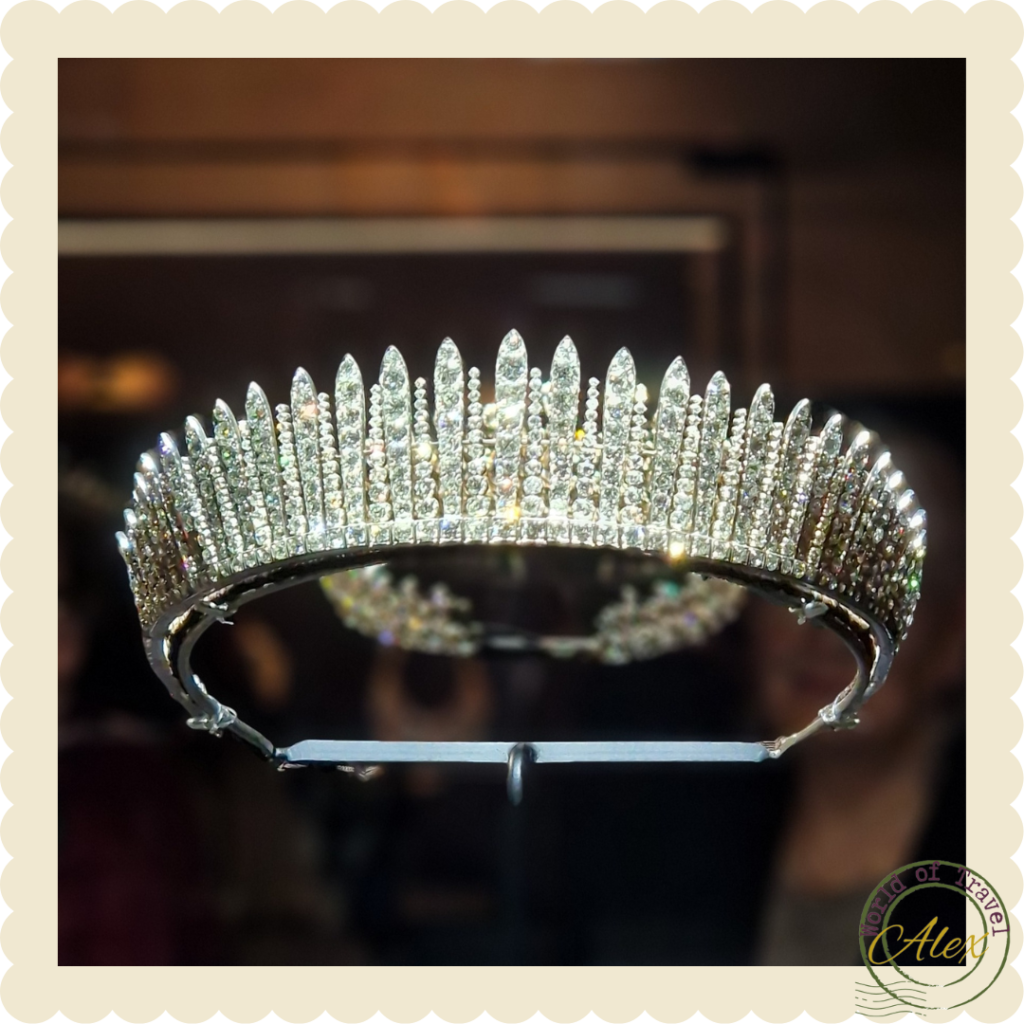


The Fife Tiara
The Fife Tiara was a wedding gift to Princess Louise by her husband, Alexander Duff, 6th Earl of Fife. He would recive the Dukedom of Fife by Louise’s grandmother, Queen Victoria, and became the 1st Duke of Fife.
Created with an exceptionally intricate and delicate framework, this piece showcases a range of diamonds, each varying in weight from 1 to 10 carats, along with 17 pendant pear-shaped hanging diamonds.
The front of the frame is set in silver, and the back is in gold, holding almost 200 carats of diamonds on the thinnest framework, allowing the diamonds’ exquisite cuts to dazzle. Particularly remarkable are the slender pivots on which these tiny pear-shaped diamonds are poised.
When worn, the pendants would have caught the light with every graceful movement, creating a dazzling display of radiance.
The Fife Tiara was inherited by Princess Louise’s daughter, Princess Alexandra, later the 2nd Duchess of Fife. She can be seen wearing the tiara in a photograph.

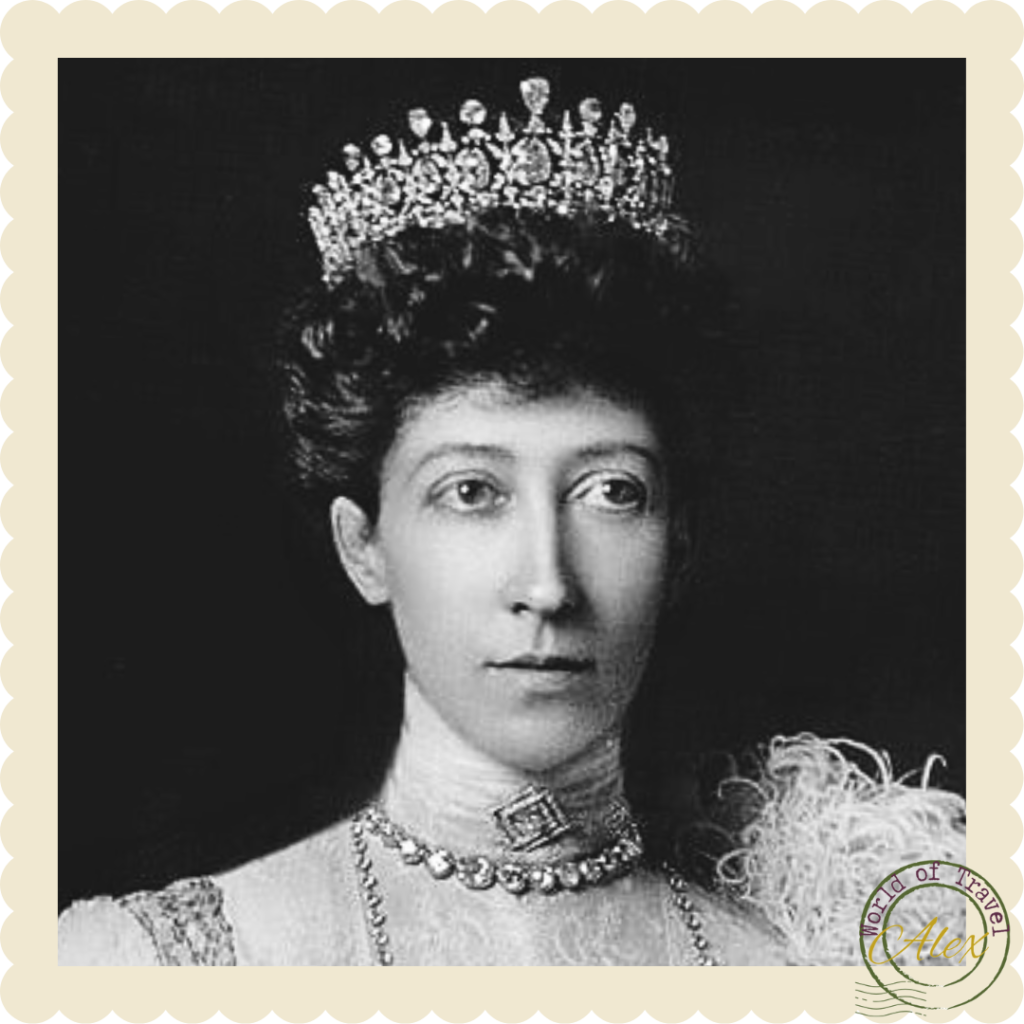

Princess Louise, Duchess of Fife
Princess Louise, Duchess of Fife, was a member of the British royal family. Born on the 20 February 1867, she died at age 63 on the 4 January 1931.
Louise Victoria Alexandra Dagmar was the third child and oldest daughter of King Edward VII and Queen Alexandra of the United Kingdom. Her royal lineage was impressive, as she was the granddaughter of Queen Victoria and sister of King George V and Queen Maud of Norway.
Her mother, Queen Alexandra, was the daughter of Christian IX of Denmark and Queen Louise of Hesse-Kassel. Alexandra was also the sister of Frederick VIII of Denmark, George I of Greece, Empress Maria Feodorovna of Russia and Princess Thyra, Crown Princess of Hanover, making the Duchess of Fife related to several royal houses in Europe.
Princess Louise, despite her mother’s intentions, married Alexander Duff, the 6th Earl Fife, in 1889. Two days after the wedding, Duff was made Duke of Fife and Marquess of Macduff by Louise’s grandmother, Queen Victoria.
The couple had three children: Alastair, a stillborn son, Princess Alexandra, 2nd Duchess of Fife and Princess Maud, Countess of Southesk.
One of the most notable aspects of Princess Louise’s life was her remarkable artistic talent. She had a passion for the arts, excelling in sculpture and painting. Her works were exhibited at the Royal Academy.

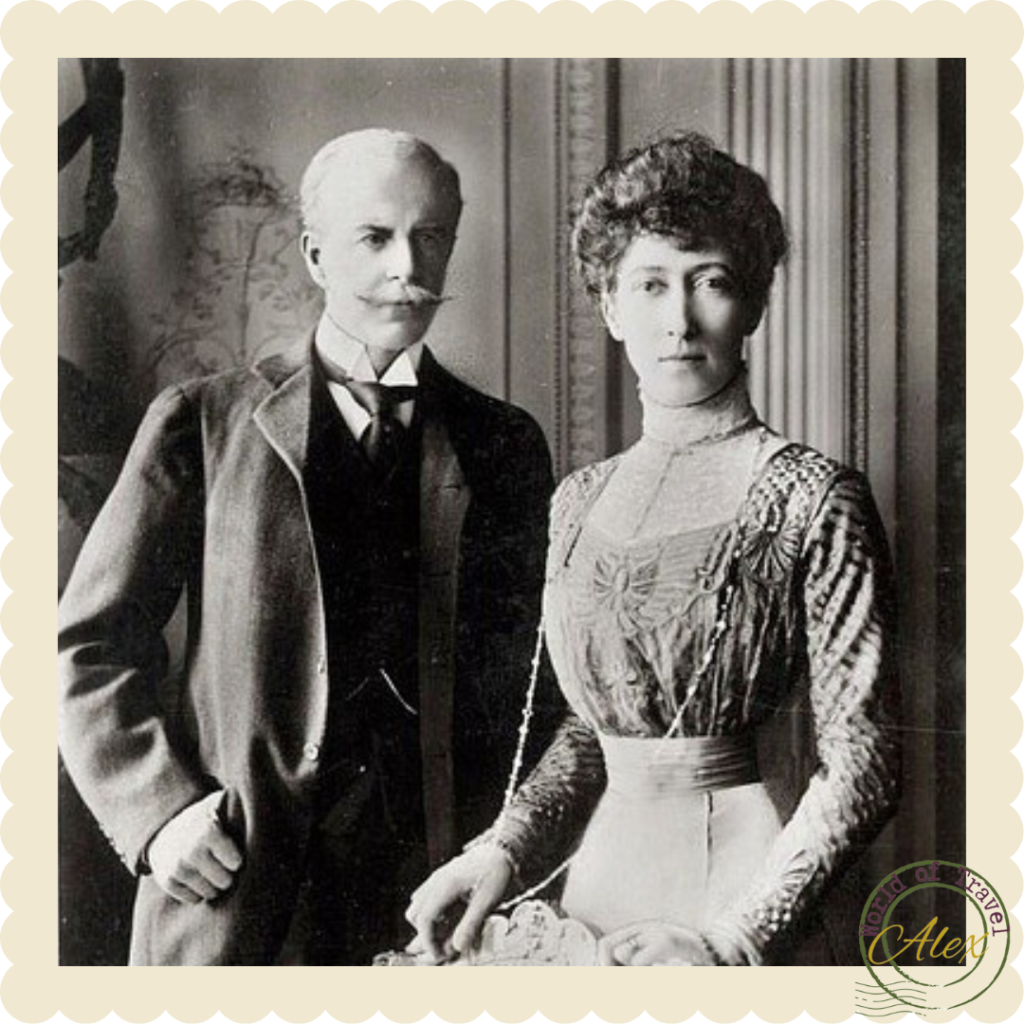

Accessibility and facilities
All three floors of the palace are accessible via lift. Kensington Palace also have access to WC, a large museum shop and a nice caffee.
Public transport
Underground: Queensway Underground Station (Central Line) or High Street Kensington Underground Station (Circle & District Lines).
Bus: Bus stop Kensington Palace, bus no. 9, 49, 52, 70, 452.
Opening times and admission
Wednesday to Sunday: 10:00 – 18:00 (pre-booking advised)
Last admission: 17:00
Kensington Palace is closed from 30 October to 12 December 2023.
Members: Free
Adult: £25.40
Child: £12.70

